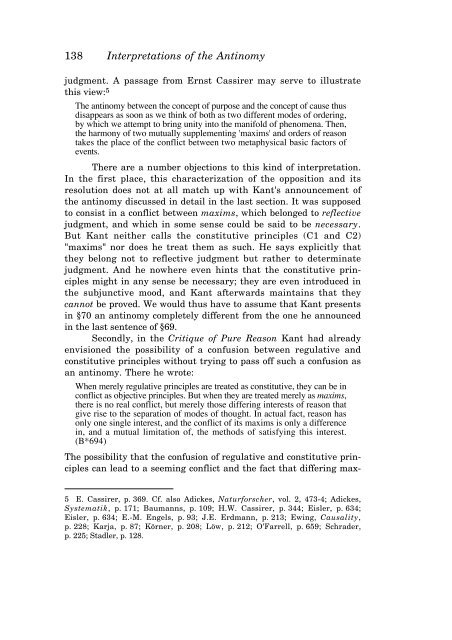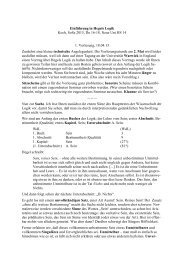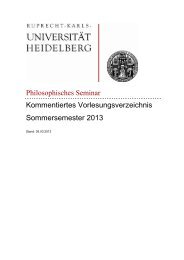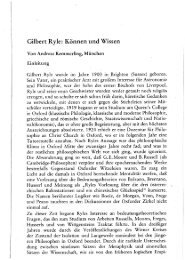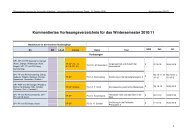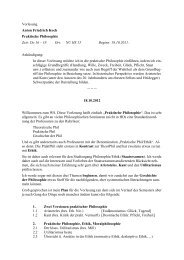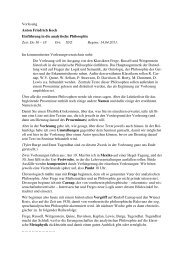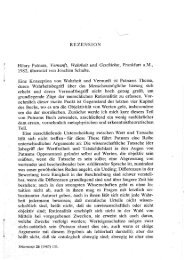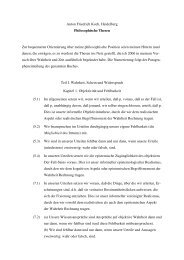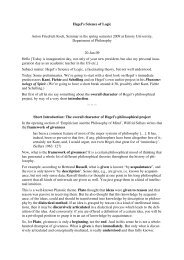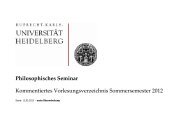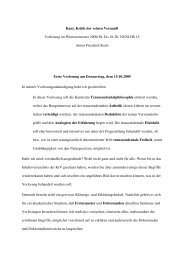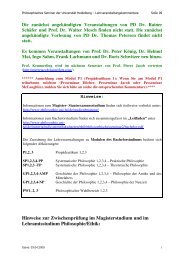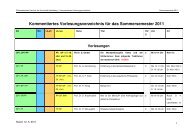KANT'S CRITIQUE OF TELEOLOGY IN BIOLOGICAL EXPLANATION
KANT'S CRITIQUE OF TELEOLOGY IN BIOLOGICAL EXPLANATION
KANT'S CRITIQUE OF TELEOLOGY IN BIOLOGICAL EXPLANATION
You also want an ePaper? Increase the reach of your titles
YUMPU automatically turns print PDFs into web optimized ePapers that Google loves.
138 Interpretations of the Antinomy<br />
judgment. A passage from Ernst Cassirer may serve to illustrate<br />
this view: 5<br />
The antinomy between the concept of purpose and the concept of cause thus<br />
disappears as soon as we think of both as two different modes of ordering,<br />
by which we attempt to bring unity into the manifold of phenomena. Then,<br />
the harmony of two mutually supplementing 'maxims' and orders of reason<br />
takes the place of the conflict between two metaphysical basic factors of<br />
events.<br />
There are a number objections to this kind of interpretation.<br />
In the first place, this characterization of the opposition and its<br />
resolution does not at all match up with Kant's announcement of<br />
the antinomy discussed in detail in the last section. It was supposed<br />
to consist in a conflict between maxims, which belonged to reflective<br />
judgment, and which in some sense could be said to be necessary.<br />
But Kant neither calls the constitutive principles (C1 and C2)<br />
"maxims" nor does he treat them as such. He says explicitly that<br />
they belong not to reflective judgment but rather to determinate<br />
judgment. And he nowhere even hints that the constitutive principles<br />
might in any sense be necessary; they are even introduced in<br />
the subjunctive mood, and Kant afterwards maintains that they<br />
cannot be proved. We would thus have to assume that Kant presents<br />
in §70 an antinomy completely different from the one he announced<br />
in the last sentence of §69.<br />
Secondly, in the Critique of Pure Reason Kant had already<br />
envisioned the possibility of a confusion between regulative and<br />
constitutive principles without trying to pass off such a confusion as<br />
an antinomy. There he wrote:<br />
When merely regulative principles are treated as constitutive, they can be in<br />
conflict as objective principles. But when they are treated merely as maxims,<br />
there is no real conflict, but merely those differing interests of reason that<br />
give rise to the separation of modes of thought. In actual fact, reason has<br />
only one single interest, and the conflict of its maxims is only a difference<br />
in, and a mutual limitation of, the methods of satisfying this interest.<br />
(B*694)<br />
The possibility that the confusion of regulative and constitutive principles<br />
can lead to a seeming conflict and the fact that differing max-<br />
5 E. Cassirer, p. 369. Cf. also Adickes, Naturforscher, vol. 2, 473-4; Adickes,<br />
Systematik, p. 171; Baumanns, p. 109; H.W. Cassirer, p. 344; Eisler, p. 634;<br />
Eisler, p. 634; E.-M. Engels, p. 93; J.E. Erdmann, p. 213; Ewing, Causality,<br />
p. 228; Karja, p. 87; Körner, p. 208; Löw, p. 212; O'Farrell, p. 659; Schrader,<br />
p. 225; Stadler, p. 128.


